Yeah, the control points are important here. And I choose them by observation as well as attempts from H2&H1 to H7&H8, just to create these fractal bigger cluster. The main idea is, find some important points to place the next cluster, since the rotation angles are fixed (that is substitution).
More exactly, this is how my code works:
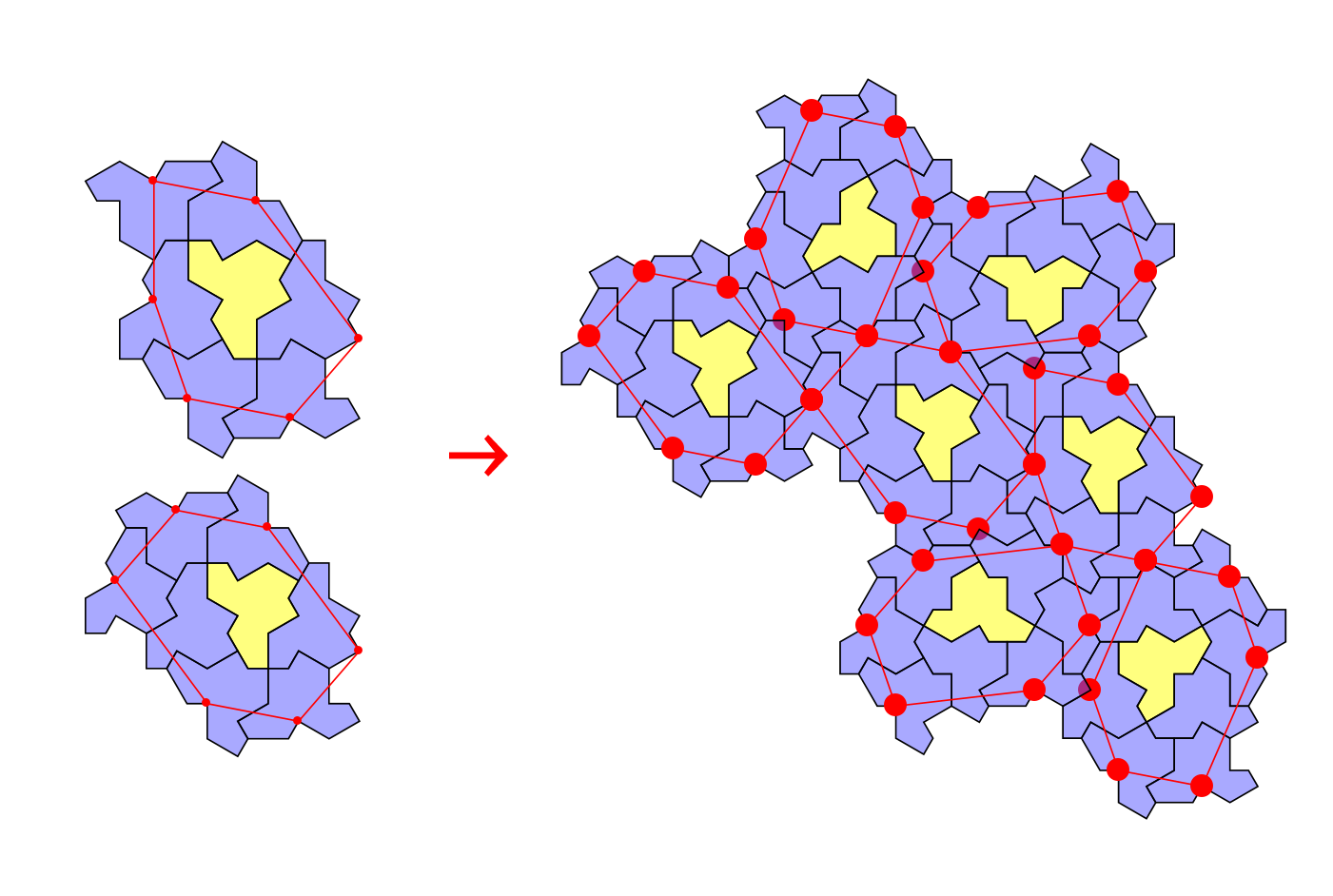
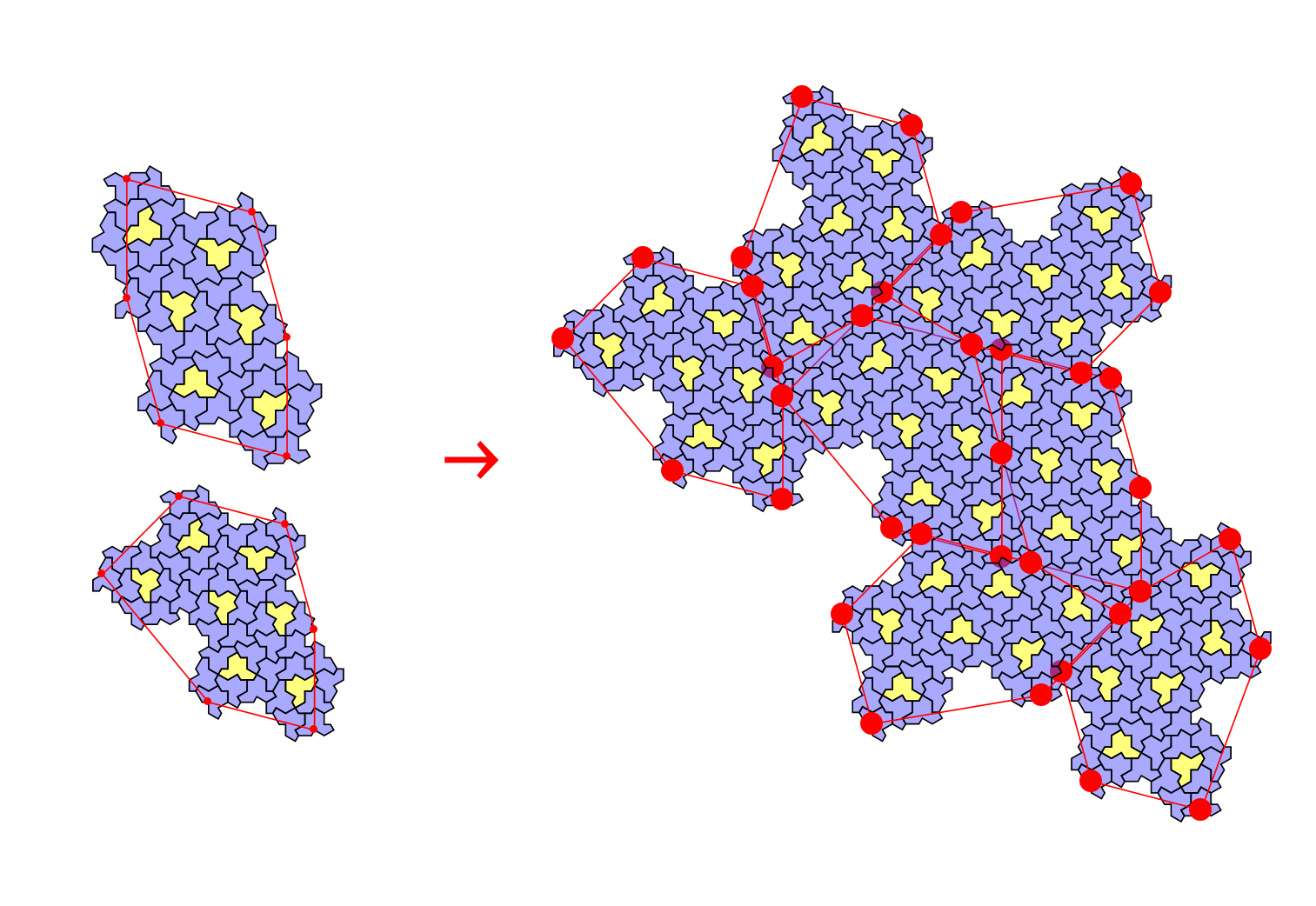
As you can see, I choose some important points where the clusters next connect to each other. By these points we can determine how to construct the next cluster.
By the way, this "control points" or "key points " idea is similar as what author used to construct spectre cluster in this video, which results this kind of fractal structure:
Few hats and many turtles:
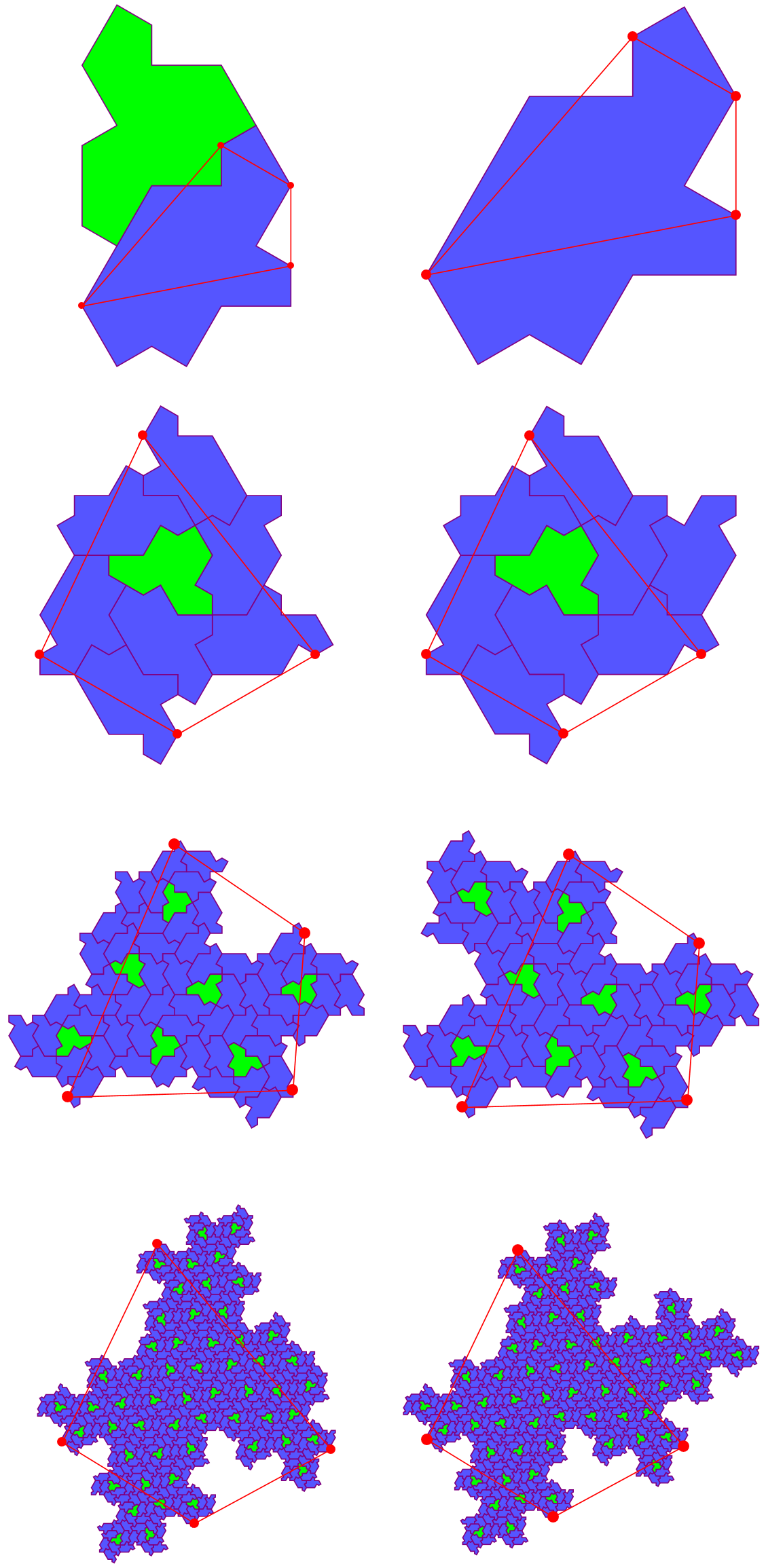
Few turtles and many hats:
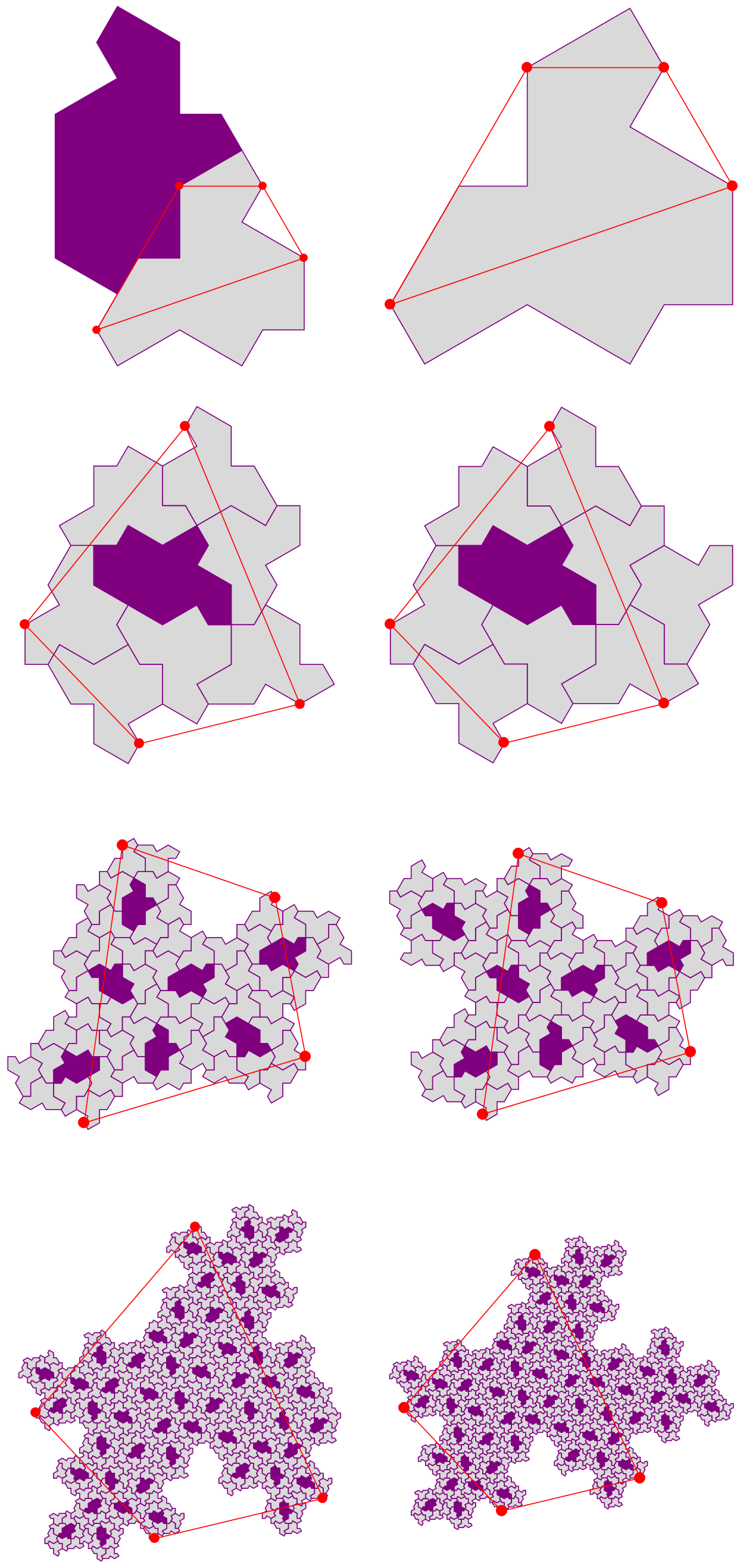
Only spectre:

The figures above are what the author shows in the video. Inspired by that, I tried this idea on hat tiles to reproduce the process of this fractal substitution in the paper, which is this post. Then, I wanted to do the same thing on spectre tiles but failled, since the substitution rule of spectre in the original paper requires reflection, which is a little tricky. So, I reviewed that video and reproduce what author did. Then we have the figures above.
I think the definition of H7 and H8 is just for making sure their substitution rule shown in paper works. I agree with you about "for aesthetic reasons". The fractal stuff never disappoints people. And for HatTralitytree, I was about to study something about it but it turned out I need a enormous cluster to find out a pattern of these vertices. Since I find that one (4,12,12) configuration determines one H8 hat super-tile, plus 3 more tiles exactly, which seems like a connecting bridge between these super-clusters.
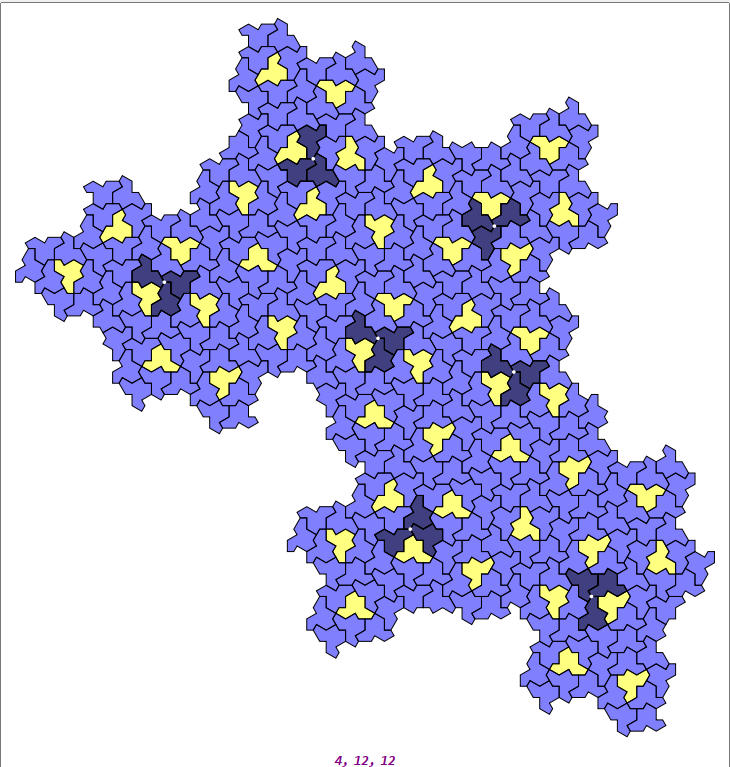
I was thinking about if we can find out how these (4,12,12) vertex configurations distribute, it is easy to replace them by corresponding super-tiles, which requires only few information of cluster.
As for the connection between these substitution rule and TralityTree, maybe more likely there is a connection between TralityTree and H-supertile, which are both in a "triangle" shape. We will find out if there is a further connection.